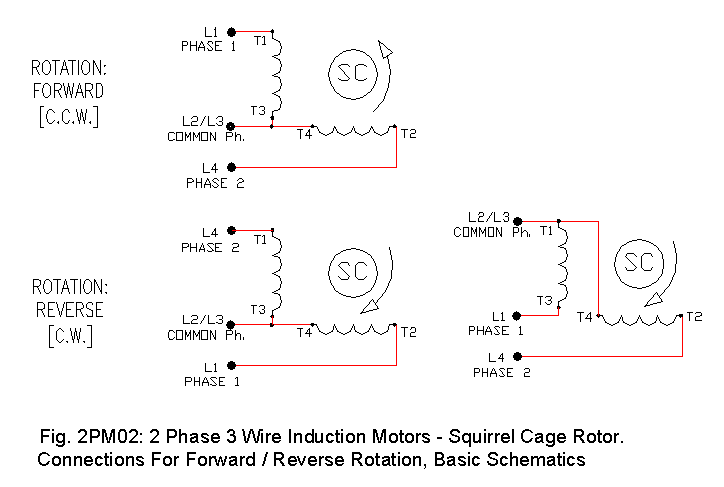edgarp
Member
- Location
- East Tennessee
I apologize in advance if this is a silly question, but it's confusing to us....
We have a very old GE transformer that is called a "two phase transformer" in all our old drawings. It's basically got a three phase 480V supply with single phase 120V out. A 1/2 hp reversible single phase motor runs off the supply.
The transformer nameplate shows:
60Hz, 0.12 kVA, 480V, 3ph, 3W - 120/126/132/138V, 2ph, 4W sec., #9T21Y7821
I have a diagram but don't know how to attach it to this post (help please if anyone wants to see it). However, the primary appears to be just a three phase wye (H1, H2, H3), and the secondary has two windings 90 degrees apart with taps in each coil for the various voltages. One end of each goes to the neutral and the other ends go to "phase 1" and "phase 2".
The bottom line is that we are looking to replace this transformer, but we can't take it out of service to really look at it. It's close to 50 years old, and it's the only one we have to supply 5 critical motors. We've contacted GE but with no luck since it's so old and they've moved their specialty transformer operation out of the country.
I guess my questions are:
1) Is anyone here familiar with this type of transformer?
2) Can I replace this transformer with a standard three phase, and still have the single phase secondary, and be able to reverse my motors?
3) Why is it called "two phase"? This is what is throwing off some of our engineers. I know that the motors are single phase and I know that the supply is single phase, but does calling it a 2-phase offer clues as to the design? I think it has somethign to do with the way we are reversing the motors - just swapping phases 1 and 2 with a mechanical interlock.
Again I apologize if this is a silly question, but we are limited in our transformer knowledge at my plant. Thanks for any help!
We have a very old GE transformer that is called a "two phase transformer" in all our old drawings. It's basically got a three phase 480V supply with single phase 120V out. A 1/2 hp reversible single phase motor runs off the supply.
The transformer nameplate shows:
60Hz, 0.12 kVA, 480V, 3ph, 3W - 120/126/132/138V, 2ph, 4W sec., #9T21Y7821
I have a diagram but don't know how to attach it to this post (help please if anyone wants to see it). However, the primary appears to be just a three phase wye (H1, H2, H3), and the secondary has two windings 90 degrees apart with taps in each coil for the various voltages. One end of each goes to the neutral and the other ends go to "phase 1" and "phase 2".
The bottom line is that we are looking to replace this transformer, but we can't take it out of service to really look at it. It's close to 50 years old, and it's the only one we have to supply 5 critical motors. We've contacted GE but with no luck since it's so old and they've moved their specialty transformer operation out of the country.
I guess my questions are:
1) Is anyone here familiar with this type of transformer?
2) Can I replace this transformer with a standard three phase, and still have the single phase secondary, and be able to reverse my motors?
3) Why is it called "two phase"? This is what is throwing off some of our engineers. I know that the motors are single phase and I know that the supply is single phase, but does calling it a 2-phase offer clues as to the design? I think it has somethign to do with the way we are reversing the motors - just swapping phases 1 and 2 with a mechanical interlock.
Again I apologize if this is a silly question, but we are limited in our transformer knowledge at my plant. Thanks for any help!

